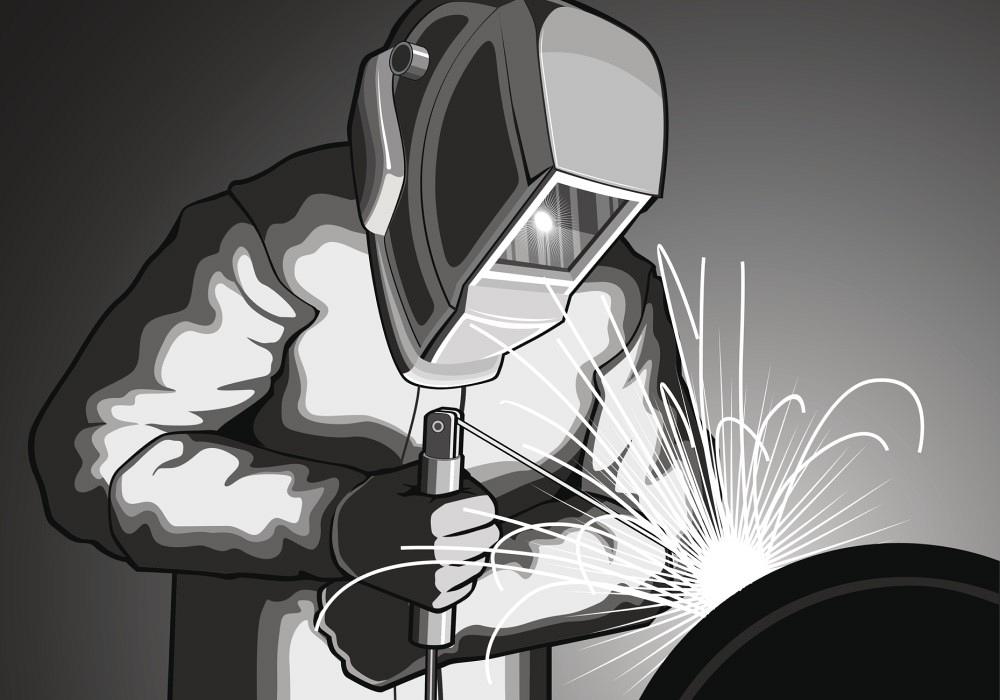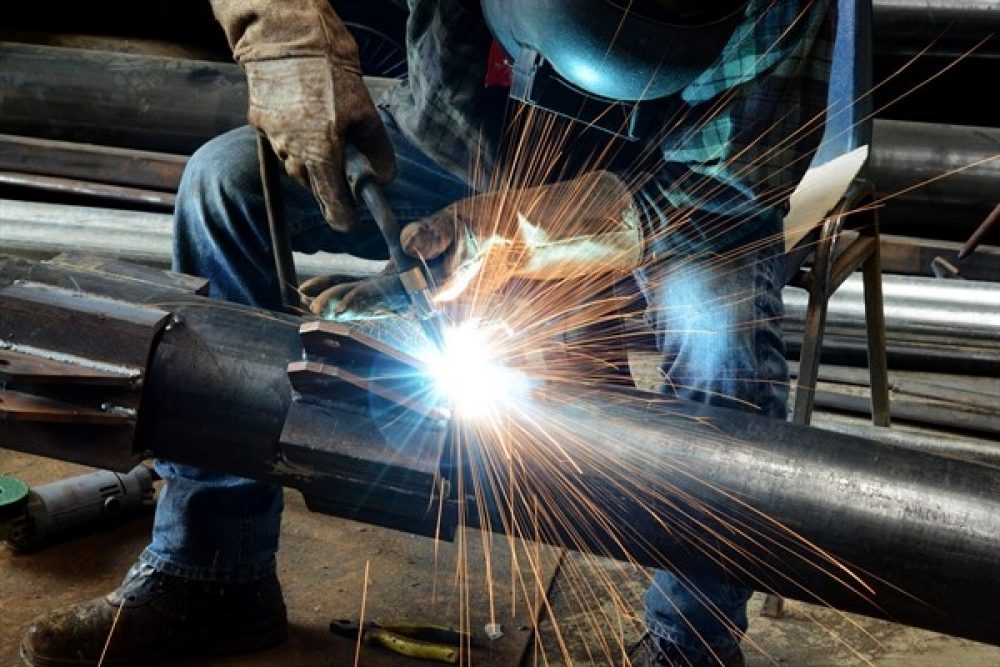All Regarding Welding: Secret Insights Into Techniques and Best Practices for Success
Welding encompasses a selection of methods, each matched for specific products and applications. Understanding these approaches, such as GMAW, SMAW, and TIG, is vital for attaining optimal results. Moreover, the right devices and security methods can not be ignored. As preparation and troubleshooting play critical roles in the welding procedure, mastering these elements can significantly boost the top quality of the final item. What are the key elements that guarantee a successful weld?
Comprehending Different Welding Techniques
Welding strategies include a variety of techniques, each fit to details applications and materials. Amongst one of the most typical strategies are Gas Steel Arc Welding (GMAW), Secured Steel Arc Welding (SMAW), and Tungsten Inert Gas Welding (TIG) GMAW, also known as MIG welding, is popular for its speed and convenience, making it optimal for thin materials. SMAW, or stick welding, is favored for its simpleness and efficiency in outdoor atmospheres, specifically with thicker metals. TIG welding provides precision and control, making it suitable for complex job and non-ferrous steels (Montana Mobile Welding and Repair Belgrade Welding). Each strategy has its distinct benefits and factors to consider, enabling welders to choose the very best technique based on the task's requirements, product kind, and desired outcomes. Comprehending these methods is important for successful welding
Necessary Welding Equipment and Tools
While different welding strategies need details skills, the best tools and tools are just as crucial for achieving quality results. Important welding devices consists of welding equipments, which vary relying on the strategy-- such as MIG, TIG, or stick welding. Protective gear, including gloves, headgears, and aprons, warranties safety and comfort during the procedure. Additionally, fixtures and clamps assist protect materials in location, making sure accuracy in welds. Consumables like welding rods, cord, and securing gas are likewise important elements that affect the high quality of the weld. Devices such as grinders and cutters promote surface prep work and post-weld ending up, adding to an expert result. Buying high-quality devices eventually enhances the performance and efficiency of welding tasks.
Safety Practices in Welding
Proper safety techniques are important in the welding sector to protect employees from possible dangers. Welders need to use ideal individual safety equipment (PPE), consisting of safety helmets with appropriate shading, handwear covers, and flame-resistant clothes. Appropriate air flow is essential to lower exposure to damaging fumes and gases generated throughout the welding procedure. Furthermore, workers should be learnt the proper handling of welding tools to avoid crashes. Fire precaution, such as maintaining combustible materials far from the welding area and having fire extinguishers easily offered, are required. Normal examinations of devices and offices can help determine prospective risks prior to they cause accidents. By sticking to these safety techniques, welders can create a much safer working environment and reduce risks associated with their profession.
Preparing Products for Welding
Preparing materials for welding is a vital action that considerably influences the quality and integrity of the final product (Belgrade Welding). Correct prep work involves cleansing the surfaces to remove pollutants such as oil, dirt, and corrosion, which can jeopardize the weld. Methods such as grinding, fining sand, or utilizing solvents are commonly used to accomplish a clean surface area. Furthermore, making certain that the materials mesh snugly is essential; spaces can cause weak welds. It's additionally vital to take right into account the positioning and positioning of the components, as this will certainly influence the ease of welding and the final outcome. Finally, choosing the suitable filler material and making sure compatibility with the base steels is essential for achieving solid, resilient welds
Tips for Achieving High-Quality Welds
Accomplishing high-quality welds requires focus to detail and adherence to finest methods throughout the welding process. Proper joint preparation is necessary, making certain surfaces are tidy and complimentary from contaminants. Picking the suitable filler material and welding method based on the base metals is important for suitable bonding. Keeping consistent traveling speed and angle while welding can protect against defects and advertise uniformity. Additionally, controlling heat input is important; excessive warm can cause bending and deteriorated joints. Regularly checking the welds throughout the process permits for instant modifications if needed. Using suitable post-weld treatments, such as cleaning and stress relief, can enhance the sturdiness and honesty of the weld, ultimately guaranteeing a successful end result.
Troubleshooting Typical Welding Issues
Welding typically offers challenges that can influence the quality and honesty of the final product. Typical issues such as porosity, inconsistent weld beads, and overheating can develop, each needing particular fixing methods. Recognizing these problems is important for welders to boost their abilities and achieve excellent results.
Porosity Troubles Clarified
Although porosity can frequently be neglected, it remains a critical issue in welding that can endanger the integrity of an welding cabinet ended up item. Porosity describes the existence of little gas pockets within the weld grain, which can lead and weaken the joint to early failure. This problem commonly emerges from pollutants, dampness, or improper shielding gas coverage throughout the welding procedure. To reduce porosity, welders should verify that the base materials are completely dry and clean, make use of suitable protecting gases, and preserve constant welding criteria. Consistently examining the devices and environment can also help recognize potential problems prior to they materialize in the weld. Dealing with porosity effectively is necessary for achieving strong, resilient welds that meet top quality criteria.

Irregular Weld Beans
Inconsistent weld grains can considerably influence the quality and toughness of an ended up item. Various variables add to this problem, consisting of inappropriate traveling rate, wrong amperage settings, and irregular electrode angles. When the welder moves also rapidly, a grain might appear slim and lack penetration, while moving as well gradually can create extreme accumulation. Additionally, utilizing the wrong amperage can lead to either damaging or extreme spatter, both of which concession weld honesty. The welder's strategy, such as inconsistent torch movement, can likewise lead to irregular grain look. To mitigate these problems, welders must concentrate on maintaining consistent, controlled activities and making certain appropriate tools settings to achieve harmony in their welds. Consistency is crucial to attaining reliable and strong welds.
Getting Too Hot and Warping Issues
Too much warmth during the welding procedure can bring about substantial getting too hot and buckling problems, affecting the architectural integrity of the work surface. These problems typically materialize as distortion, which can jeopardize positioning and fit-up, making further assembly challenging. Factors adding to overheating consist of the selection of welding parameters, such as voltage and take a trip speed, as well click here to read as the type of product being bonded. To mitigate these concerns, welders need to preserve regular traveling speed and appropriate warm input while keeping track of the workpiece temperature. Additionally, pre-heating or post-weld warm treatment can help minimize stress and anxieties triggered by quick cooling - Belgrade Welding. Routine assessment and adherence to ideal practices are crucial in preventing overheating and making certain the long life and dependability of welded frameworks
Often Asked Inquiries
What Are the Occupation Opportunities in the Welding Sector?
The welding industry offers diverse profession opportunities, consisting of positions as welders, examiners, teachers, and designers. Professionals can operate in manufacturing, construction, aerospace, and automobile sectors, taking advantage of strong demand and affordable salaries in numerous duties.
Exactly How Can I Improve My Welding Speed Without Compromising High Quality?
To boost welding speed without giving up quality, one must practice effective techniques, keep devices, optimize settings, and enhance hand-eye coordination. Regular training and seeking comments can also substantially contribute to attaining quicker, premium welds.
What Accreditations Are Readily Available for Welders?
Many qualifications exist for welders, consisting of those from the American Welding Culture (AWS), the National Center for Building Education and Study (NCCER), and different industry-specific companies. These credentials boost employability and demonstrate ability proficiency.
How Does Welding Affect the Properties of Metals?
Welding influences the residential properties of metals by altering their microstructure, which can lead to changes in firmness, ductility, and stamina. Warmth input and cooling rates during the procedure significantly impact these material attributes.
Can I Bonded Dissimilar Metals With Each Other?
